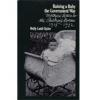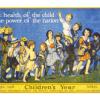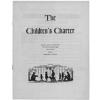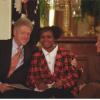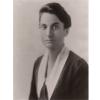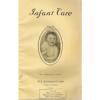You are here
History
The centennial anniversary offers a valuable opportunity to look back and reflect on the Children’s Bureau’s impressive history. An engaging e-brochure, interactive timeline, commemorative e-book, and other resources help tell the Children’s Bureau’s story and feature the key issues, laws, and leaders that shaped that story.
100 Years of Serving Children and Families
On April 9, 1912, President William Howard Taft signed the Children’s Bureau into law and created the first government agency in the world focused solely on the needs of children. Over the next 100 years, the Children’s Bureau played a critical role in improving the lives of children and their families.
Throughout its history, the Children's Bureau has broken new ground on a range of social issues.
- In its earliest years, the young Bureau worked to bring an end to infant deaths and child labor, understand juvenile delinquency, and offer relief from dire Depression-era conditions.
- During World War II, the Bureau expanded maternal and child health services, while supervising foster care for child refugees. Postwar initiatives brought attention to vulnerable children, including children with disabilities, premature infants, and children of migrant families.
- The 1970s and 1980s sharpened the Bureau’s focus on child abuse and neglect, foster care, and adoption as it guided efforts to respond to maltreatment, preserve families, and achieve timely permanence for children and youth.
- The modern Children’s Bureau partners with States, Tribes, communities, and national organizations to strengthen families and foster permanency and connections for children and youth through evidence-based, culturally competent, and trauma-informed practices.
The Story of the Children's Bureau
While priorities and trends have changed over time, the Children’s Bureau's work has reflected:
- Collaboration
- Assistance to States and Tribes
- Research and data collection
- Getting the word out through campaigns, publications, and conferences
- Leadership
Through engaging text and historical images, the Story of the Children's Bureau highlights key activities and accomplishments in each of these areas "then" and "now".
Timeline
Coming Soon: An interactive timeline of key events that shaped the course of the Children's Bureau history.
The Children’s Bureau Legacy: Ensuring the Right to Childhood
Take a detailed look at 10 decades of Children’s Bureau leadership and accomplishments presented within the context of changing world events and social movements. This commemorative e-book will be available in late 2012.
Justice, Not Pity: Julia Lathrop, First Chief of the U.S. Children's Bureau
Dr. Cecelia Tichi presents a captivating account of Julia Lathrop and her groundbreaking efforts as the first chief of the Children’s Bureau. Access the full online transcript, PDF (157 KB), and audio mp3 (9.01 MB) of the 2007 presentation.
To listen to this file, you must have an audio player on your computer. To download Windows Media Player for free visit: http://www.microsoft.com/windows/windowsmedia/player/download/download.aspx

Centennial Moments
Children's Bureau Express
Centennial Series
Read about highlights from each decade of the Children's Bureau's first 100 years:
- February 2013:
- December 2012/January 2013:
- November 2012:
- October 2012:
- September 2012:
- August 2012:
Theme by Danetsoft and Danang Probo Sayekti inspired by Maksimer



